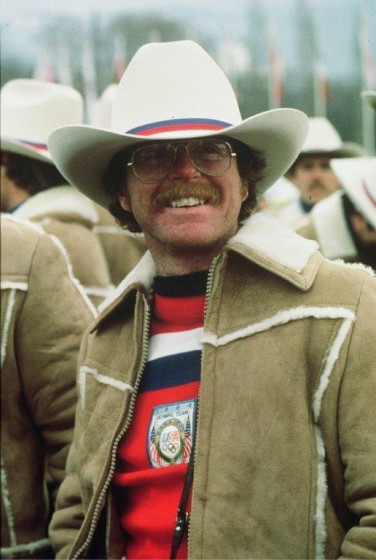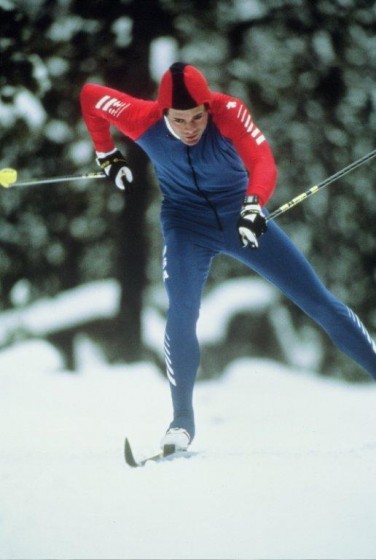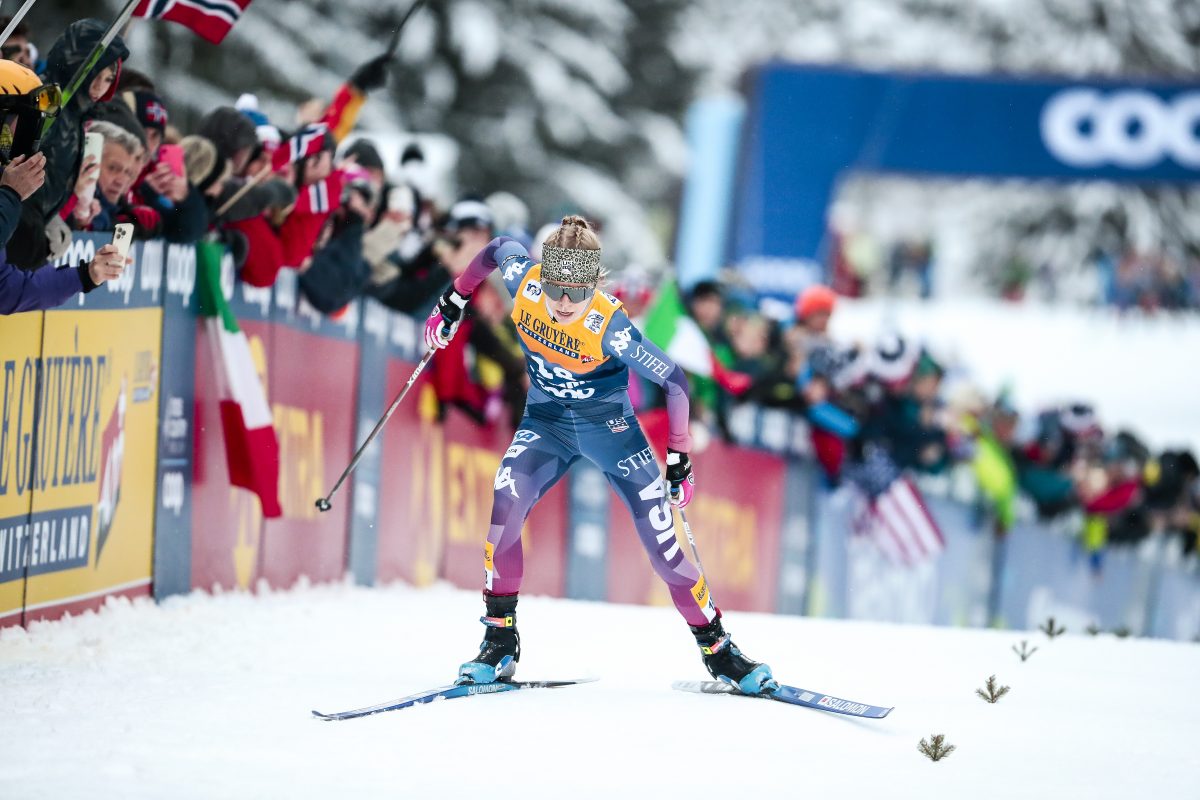
Peter Ashley is “Mr. Fischer” in the United States. For over 18 years, he has been vice president of the nordic division at Fischer Skis. He is responsible for everything that has to do with Fischer Nordic USA: ski selection, pricing, marketing, reps, budget, and more.

Although Fischer is his life these days, Ashley has been involved with cross-country skiing in many other capacities for decades before working for Fischer. He has truly been around the nordic block. Ashley has had just about every job that skiing offers and has experienced the evolution of the sport firsthand. FasterSkier’s Nancy Fiddler caught up with him recently on the phone in a conversation about the development of cross-country skiing and some of his best stories from a pivotal period in the 1980s.
Ashley, 62, lives in Contoocook, N.H., with his wife, Rhonda, and three Maine Coon cats. New England is his home now, but Ashley is a self-declared westerner with strong roots in Jackson Hole, Wyo. For Ashley, the West was where the whole skiing thing started.
Growing up, his family was hugely involved with skiing and the Jackson Hole Ski Club (JHSC). Ashley trained and raced alpine, then nordic with the JHSC, making his first Junior National nordic team in the mid 1960s when he was in eighth grade. He continued to race alpine and nordic until his junior year in high school, when he admits that his size and athletic talent were more suitable to cross-country skiing.
It has been all nordic ever since for Ashley, who went on to race at the University of Colorado under the direction of Bill Marolt. After graduating in 1974 with a degree in finance, the same year that fiberglass skis were introduced, Ashley returned to Jackson Hole to try his hand at coaching. He got his feet wet coaching juniors for four years as head coach of JHSC, the beginning of a 12-year run of coaching that took him all the way to the U.S. Ski Team. Along the way, Ashley worked with a lot of interesting characters, traveled the world, and witnessed firsthand some big changes in skiing.
“Skiing was a very, very different sport 25 years ago.” — Peter Ashley
World Cup cross-country ski racing has been divided into two disciplines since the 1986/1987 season: classic and freestyle (skating). The evolution of skiing from an all-classic technique sport to a two-discipline sport took place over the course of several rocky seasons and saw some major battles.

The year was 1985; the place: Seefeld, Austria, and the event: the 35th Nordic World Ski Championships. There was a lot of drama in the days leading up to the races, and the hot topic was skating. The question surrounding the final preparation was whether skating would be allowed in the championship races, or just the traditional classic skiing.
Left to the Norwegians, who had already banned skating in junior competition in Norway, there would not have been any skating at the 1985 Worlds. The prevailing attitude is best summed up by Norwegian Ivar Formo, Controller of Equipment, who said, “no one can be the World Champion on skis without grip wax.”
The women’s coach for the U.S. Ski Team (USST) from 1984-85, Ashley was in the thick of this historical debate. Cross-country skiers had been experimenting with skating for a couple of years. As he remembers it, skiing had taken on a hybrid form by the time of the Seefeld World Championships. Skiers were still using kick wax, but moving with the marathon skate and a gliding herringbone, which eventually morphed into a rudimentary V1 technique.
With narrow trails with set tracks and athletes using short poles, long skis and kick wax, the stage was hardly set for the break out of skating. Still, athletes were looking for faster and faster methods of skiing. At Seefeld, just days before the first race, Swedish skier Gunde Svan was seen experimenting with one very long pole and no kick wax. This silliness by the eventual-double gold medalist was quickly put down by the organizers, who were desperately looking for a way to prohibit skating at the Championships.
According to Ashley, the way it finally went down was with a nations’ meeting where a vote would temporary prohibit skating in Seefeld. A unanimous vote was required. All it took was a single “no” vote from the Australians, and the rest is history.

Ashley recalls snow conditions on the Seefeld courses contributing to the decision by some teams to abandon kick wax entirely. As if 32 degrees Fahrenheit wasn’t bad enough, the snow was extremely dirty. “Nothing was kicking and everything was slow,” Ashley said.
For some athletes, this was the first time they would race without kick wax. The Americans had been fooling around with the skating techniques and little to no kick wax for some time on classic equipment, according to Ashley, who recently learned that was a different story for the Norwegians, whose ski leaders did not embrace skating.
In a conversation two years ago with former biathlete and nordic skier Grete Nykkelmo, Ashley said he learned that the Norwegian women were not allowed to skate in training. Nykkelmo, who won four medals at 1985 World Championships: a gold in the 20 k, bronze in the 5 and 10 k, and a silver medal in the relay, said that the Norwegian women had to quickly get with the program. In the end, skiers who went with kick wax were losers. The Norwegians managed to top the medal charts at Seefeld, but the battle wasn’t over yet.
The 1984-85 World Cup season was fraught with conflict over skating. Ashley remembers that in the races prior to the World Championships, organizers went to great lengths to keep skating out. He describes barriers built on the race trails to prevent any kind of skating, ugly coaches’ meetings and threats of disqualifications.
After Seefeld, things were still not resolved and for the rest of the season, race organizers tried everything possible to keep classic skiing as part of every race. Some races (Falun ’85 World Cup) had sections of course that were classic only and other sections on the same course that were “freestyle.”
“We were just trying to make sense of all the technical changes that were happening.” — Ashley
A season later, the 1985-86 World Cup was all skating. Classic skiing had all but disappeared for the time being (except for in Norway). Poles got longer, skis got shorter, and a good solution for boots was yet to be arrived at. In short, it was an equipment revolution and nordic skiing experienced a huge bump in sales.

Only a decade earlier, cross-country skis went from wood fabrication to fiberglass, a phenomenon that changed the sport completely, according to Ashley. Fischer fiberglass skis first appeared at the 1974 Falun worlds. Adidas was the first company to do away with the bulky three-pin bindings and duck-billed boots, replacing them with running-shoe-like boots and 38-millimeter bindings. The skis were faster and the boot-binding system sleeker, but it was still classic skiing.
In 1986 and 1987, Ashley once again found himself in the middle of everything. He was now responsible for Cross-Country Coaches Education for the U.S. Ski and Snowboard Association (USSA). He recalls this period an “extremely challenging” time to be trying to teach the country how to ski. Skating was here to stay, but by 1987, thanks largely to the Norwegians, classic skiing was back in international competition. It was now no longer possible to use any form of skating in a classic race.
What started as a hybrid classic-skate technique was now two distinctive methods of skiing. While classic skiing remained much the same, advances in skating equipment like higher cut, plastic-cuffed boots caused skating techniques to change almost overnight. Pole timing to match terrain evolved and Ashley was running to keep pace with all of it. V1, V2, V2 Alternate – these were names Ashley and others came up with to describe the new techniques. He remembers this period in U.S. skiing history as a bit chaotic, with too many experts and no definitive organization. He also recognizes this time as when the sport was thrown “wide open.”
The Path to Fischer
After the 1986-87 season, Ashley found himself without a job. It was a time of change, and USSA and the USST, in preparation for a merge, let the coaching staff go. For Ashley, it was time to move on, but he wasn’t ready to let go of the sport entirely.
For a year, he cut trails at Jeremy Ranch in Park City before beginning a stint working at Pacific Mountaineer in Palo Alto, Calif. The move to the Bay Area was a big one for Ashley, who had always lived in the mountains, but he stayed involved with skiing by coaching masters near Lake Tahoe.
In 1994, Ashley got a phone call from former skier Dan Simoneau, who presented an opportunity that ultimately led to Ashley’s current position at Fischer. A two-time Olympian and current nordic director at Mt. Bachelor Sports Education Foundation, Simoneau was getting ready to leave Fischer, then owned by Raichle Molitor, for a new job at Timex. He offered Ashley a position as Fischer product manager and Ashley took him up on it. By November, Ashley was living in Connecticut and quickly learning everything there was to know about Fischer skis. He admits that on his first purchasing trip to Europe, he felt more than a little bit unprepared.
Going on 19 years with the company, Ashley has landed and is thriving. He is grateful for the success of Fischer and acknowledges that the company is grateful that people believe in them at the top of the sport.
“This is not an un-cool sport to be in nowadays.” — Ashley
Ashley has seen tremendous growth and change in the sport of cross-country skiing in the U.S. He believes the sport is benefiting already from the recent success of the U.S. women’s team. This success in a sport dominated by Europeans was a long time coming. Ashley has seen generations of female cross-country skiers in our country pave the way for today’s champions. There have been many hurdles to cross, like doping, politics and funding problems over the years, but the image of cross-country skiing has never looked better, he said.
Looking back over the decades, Ashley sees nordic skiing as much more main stream now than 20 years ago. Nordic skiers used to be branded as eccentric, loner types in the ’70s and ’80s, dedicated athletes in a fringe winter sport with very little media exposure. Kooky behavior was not uncommon and almost expected of the athletes of this period.
There are higher expectations for today’s nordic athletes. The sport is maturing in the U.S. and is highly professional for athletes and coaches alike. Social media has increased the visibility of today’s skiers, who are able to manage their own brand. Media training is necessary for athletes to help them deal with this increased visibility. The bar has been raised, according to Ashley, and there is no better example than Kikkan Randall of a nordic skier who “acts the right way.”
Finally, Ashley is excited to see the success of U.S. skiers directly affecting the numbers of kids entering the sport today. It’s a new, very cool sport to be a part of.
Peter Ashley is putting together a slideshow of the history of skating, the cast of characters of the time, and the international scene from the early to mid-80s to present this fall at FinnSisu in St. Paul, Minn.
Nancy Fiddler
Nancy Fiddler is a two-time Olympian and 14-time National Champion. She has been coaching juniors and masters for 20 years in Mammoth Lakes and Truckee, Calif., and most recently in Sun Valley, Idaho. She lives most of the time in the Eastern Sierra with her husband and daughter and is currently trying to get in touch with her creative side through writing.




4 comments
kwikgren
August 20, 2013 at 4:49 pm
Great article, incredible history, awesome skis.
In my opinion, a little “kochie” behavior can be a good thing if it leads to thinking outside of the box and results in innovations like hairies, skating, and sand skiing (all of which have become favorite aspects of skiing to me in my everyday skiing). To me, this makes Koch one of the greatest XC skiers of all time from any country.
I also couldn’t agree more about Randall being the consummate professional, leading the way for a whole new generation of top racers from this country in these exciting new times.
skidog
August 20, 2013 at 5:45 pm
2 thumbs up!
Tim Kelley
August 20, 2013 at 6:09 pm
Agree with Kwikgren. Great article, great guy. And – anyone who owns Maine coon cats is very cool.
But the comment “acts the right way” is bit scary. Individualism and “acting your own way” is what defines America. Besides Koch – Thomas Edison, Henry Ford, Bill Gates and Steve Jobs didn’t “act the right way”, in many peoples’ eyes. But the world is a better place thanks to these people marching to the beat of their own “kooky behaviour” and individualism.
nordic_dave
August 21, 2013 at 10:23 am
Grrreat article !
I learned to ski during this time, technique? What technique? My first so called full on skate race was when some yahoo
wiped out the classic track on his snowmobile, we just went for it.
Peter, the trails at Jeremy Ranch still exist, 10,000 acres owned by someone who likes their privacy but allows me to wander his property doing hill bounding intervals. There are streets now at the golf course with houses where there used to be trails.
Yesterday I roller skied with the NTG group at Jeremy as they were a bit incredulous at the terrain and effort they had to put forth. I smiled thinking of all the history that took place here that nobody knows about, I.e. the NCAA Championships, coming face to face with a snarly Soviet coach, the endless trail system, etc…
Thanks again for this article with so much rich history about politics, product innovation and sport revolution.
Nordic Dave 🙂